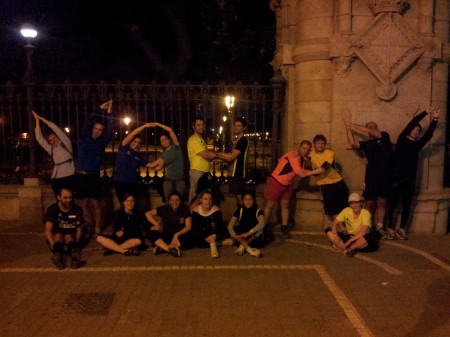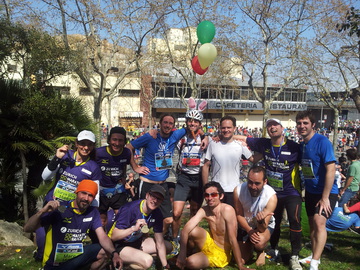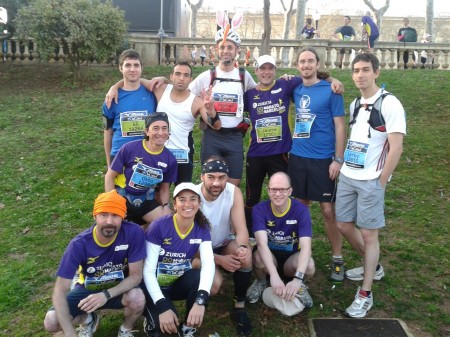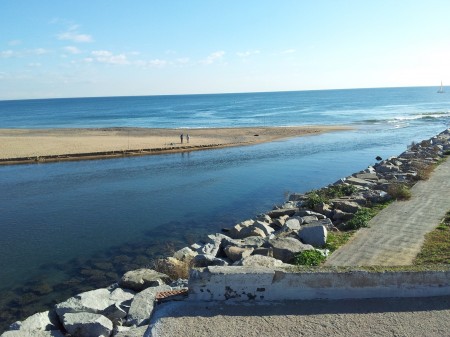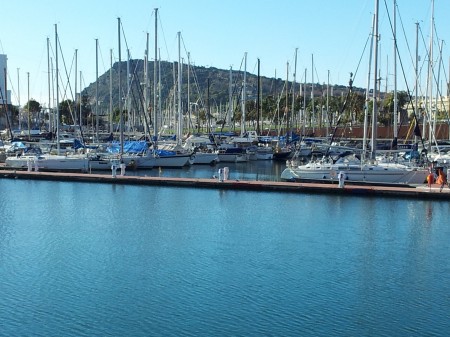This is the fourth part in the series. The third part described race day: from the successful run up to my last memory of that day.
Galia remembers hearing weird voices from the bedroom. She called me and I didn’t respond. She entered the room and saw foam coming out of my mouth, while my eyes were closed. She tried turning me aside, so I wouldn’t suffocate from vomiting while not being conscience.
Then came the scary part: I had convulsions, and all my body was shaking. I even fell from the bed, luckily on the thick blanket that fell on the floor.
At that point, she called the emergency services and demanded an ambulance to come at once. While the ambulance was on its way, I woke up and began screaming, not speaking any understandable language. This seems more scary than losing conscience. The doctor on the telephone line kept her busy and collected information.
The paramedics that arrived on the scene already guessed that I was a case of low sodium, or water poisoning. They tried speaking to me in Spanish, but didn’t get a response. When Galia translated their basic instructions to Hebrew, I did partially cooperate. We traveled to the emergency room while I was awake but unresponsive.
The doctors at the emergency room at Hospital del Mar were already briefed about the “Marathon Man”. They described my situation as “grave”. Not very encouraging but still reversible. Healthy people have sodium levels of between 135 to 146. Mine was 117.
Recovery
The treatment is simple yet slow: the level of salt should carefully rise back to normal, using IV. Pumping it up too fast can cause irreversible damage to the brain. No medicine helps. They told her that I won’t get back to normal functioning until the sodium returns to normal. And that wasn’t guaranteed.
At this point she called two good friends who live in Barcelona and they came immediately to be with her in the ER. I am very thankful for that Reli and Tim. My parents, who were fearful before the race, hadn’t heard from me since the end of the run, and began trying to communicate me and then her.
During the night between Sunday and Monday, my sodium levels fell to 115, but my situation stabilized. A brain scan showed nothing unusual, but given my behavior, it was probably flooded with water. I was transferred to the Intensive Care Unit.
On Monday, Galia began communicating my fortunes to family and friends. My parents got flight tickets immediately. I thank them very much for their support. So did Galia’s sister. Thank you very much as well.
My eyes were open during Monday, but I wasn’t really there. They had to tie my hands and legs, in addition to the regular and intense monitoring. I tore off an oxygen mask and luckily I didn’t need really need it as I was breathing easily.
Back to Life
My first memories are from realizing I’m not at home. Each time I saw the hospital bed and lights, I refused to believe it, and I went back to sleep. I was so dizzy, that nothing seemed real.
Eventually I began realizing that these hospital sights are real and that they’re not going away. I began recalling the marathon, the sick feeling at home and the dots began connecting.
The medical staff asked me in Spanish: “Do you know where you are?”. I answered them in Spanish: “In a hospital?”, still uncertain. They confirmed. They told me it was around 4 AM, and before going back to sleep, I wanted to verify that it’s Monday, but they told me it’s already Tuesday. I was shocked to discover that a day and half were totally lost.
The first time that I saw Galia was with her sister. She was very relieved to see me communicating once again. I was surprised seeing her sister. Once again, I had doubts about being awake as her sister lives in Israel…
When my parents arrived, they were happy to see me in my normal behavior. At the end of that day, I was already transferred to a normal unit, for a few more days of recovery.
Muscle Destruction
The plan was to release me in a day or two. On Wednesday, my sodium was around normal levels and I felt much less dizzy. I was ordered to drink only a rationed amount of water, to keep on lowering the sodium levels. They already disconnected me from all the machinery, including the IV.
And then, a doctor rushed in saying that they are reconnecting me to the IV, in order to lower my CK (or CPK) levels. This is an enzyme that appears (also) during the destruction of the muscles. The convulsions took their toll. Normal levels are 20-200 and I had a level of more than 150,000!
So now, I had to wash out this toxic (by drinking water in addition to the IV) and they wouldn’t let me go until it stabilized. Such high levels could have caused damage to the kidneys.
Eventually I stayed in hospital until Tuesday, April 3rd, when blood tests showed that the CK level fell to 3K. The next test, on Thursday, already showed 726 – still over 3.5 times the maximum desired levels. I am ordered to return to physical activity very gradually, and I won’t be running at least until another appointment with a doctor on April 23rd.
The next chapter includes a few thank yous, my conclusion from the race and plans for the future.
All the chapters:
- Running Background
- Preparing for the Marathon
- Race Day – From Euphoria to ER
- Losing it and Getting Back
- Thanks and Conclusions


